A TRAVEL NEWS ARTICLE ABOUT SWITZERLAND

'TIME OUT IN THE WATCH VALLEY'
Clocks and watches have been made in the Jura region of Switzerland since the days when the Hugenots fled from France taking their skills with them. Once a cottage industry in the dark days of winter for the farm workers unable to get outside, today it has become big business. As we travelled along I spotted many workshops, schools and factories devoted to their production, some bearing famous names like Longine and Breitling. But it was not until I walked through the doors of the stunning International Watch and Clock Museum in the elegant Art Nouveau town of La Chaux-de-Fonds that I realised just how serious the Swiss are about their timepieces.
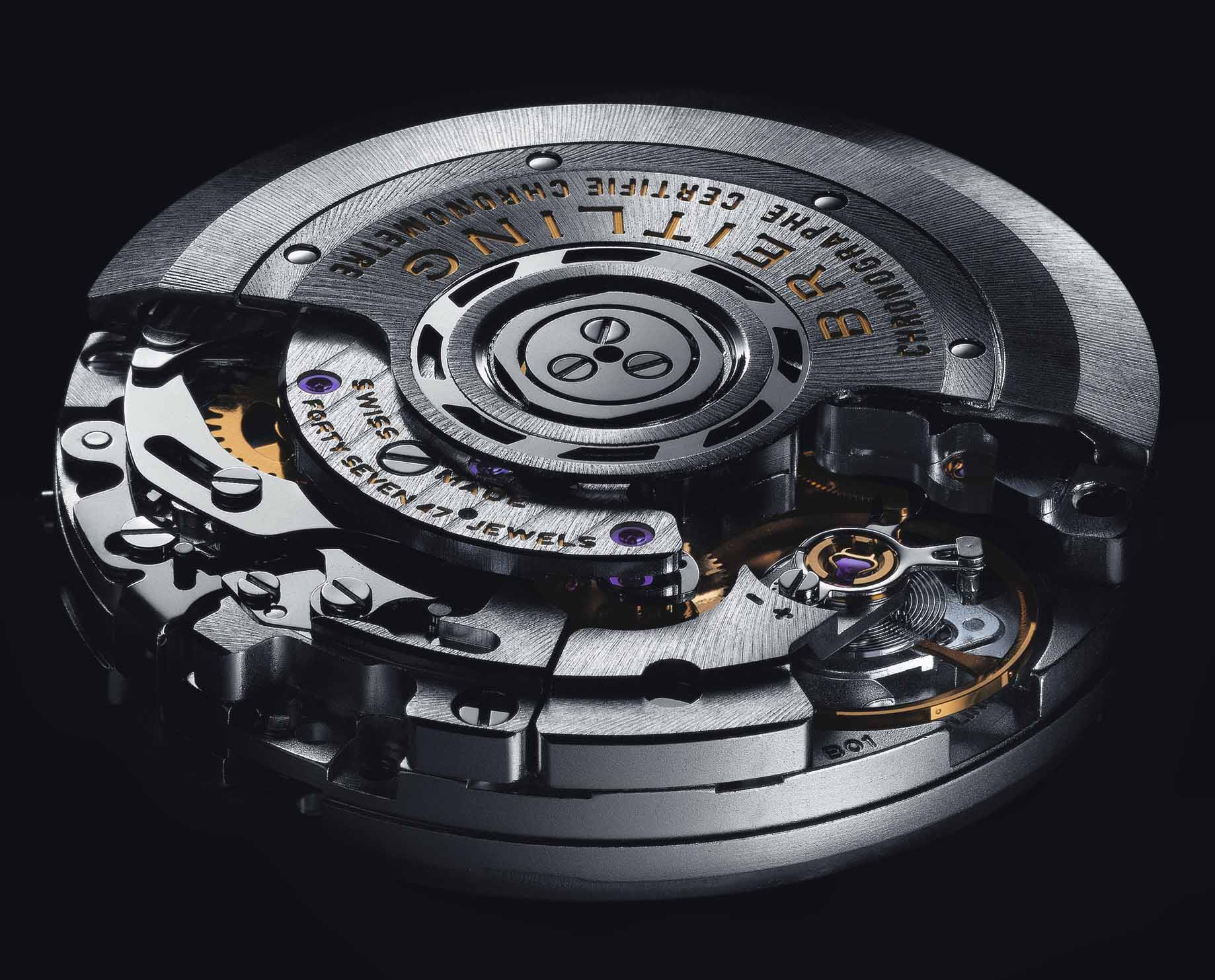
Chronometer
The museum itself is a masterpiece of design – a building quarried out of the rock helping to ensure that the even temperature needed for some of its exhibits is constantly maintained – but it is the exhibits themselves that steal the show. Some 3000 of them are on display at any one time. Along with a Chinese incense burner timer are sundials, navigational instruments, an example of Giovani Dondi’s 14th century planet timepiece and clocks and watches galore – some plain and functional, others exquisitely jewelled and decorated. Around me hour bells rang and chimed to different tunes as I learnt about 18th century shock absorbers, one-coil balance springs, regulators and examined the watches of Georges-Frederic Roskoff who produced them for ordinary folk, rather than the elite.
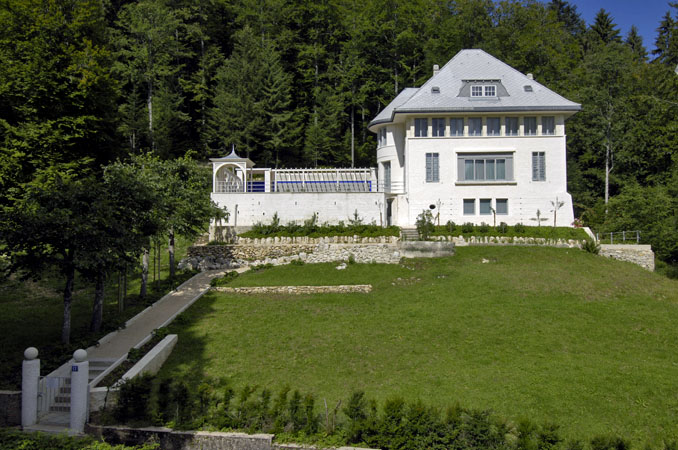
The 'White House'
Also in La Chaux-de-Fonds we had come across a house designed by Charles Edouard Jeanneret (Le Courbusier to most of us). The famous architect was born in the town and at the age of 25 designed the Maison Blanc for his parents. The white house with its grey window frames and vibrant blue highlights has been restored with many of its original features.

A snowy roof-top view over La Chaux de Fonds
Leaving La Chaux-de-Fonds we drove alongside a rippling stream where hopeful fishermen sat, into a gentle, pastoral scene. Scarlet rowan berries made a vivid splash of colour against the backdrop of dark fir trees as we progressed deeper into the Val de Tavers. Asphalt was once mined in this valley and the old mine can still be visited on guided tours. A ham dish cooked for several hours in the asphalt is one of the region’s culinary specialites. But we were in search of absinth not ham that evening. Since 2004 it has been legal to produce absinth and the valley is home to several producers. Herbs such as hyssop, aniseed, fennel, coriander, angelica and peppermint are dried and blended, mixed with water and pure alcohol, heated and the steam allowed to condense into a brew that can be anything from 50 – 70% proof. It is not for the faint-hearted.
Earlier in our visit we had sampled something much more to my liking. Cheese. And a very special kind of cheese too. At Bellelay Abbey the monks had discovered a means of preserving milk during the winter by turning it into the famous cheese known today as Tete de Moine. Even without the fancy cutter that shaves it into exquisite ruffles it is still delicious.
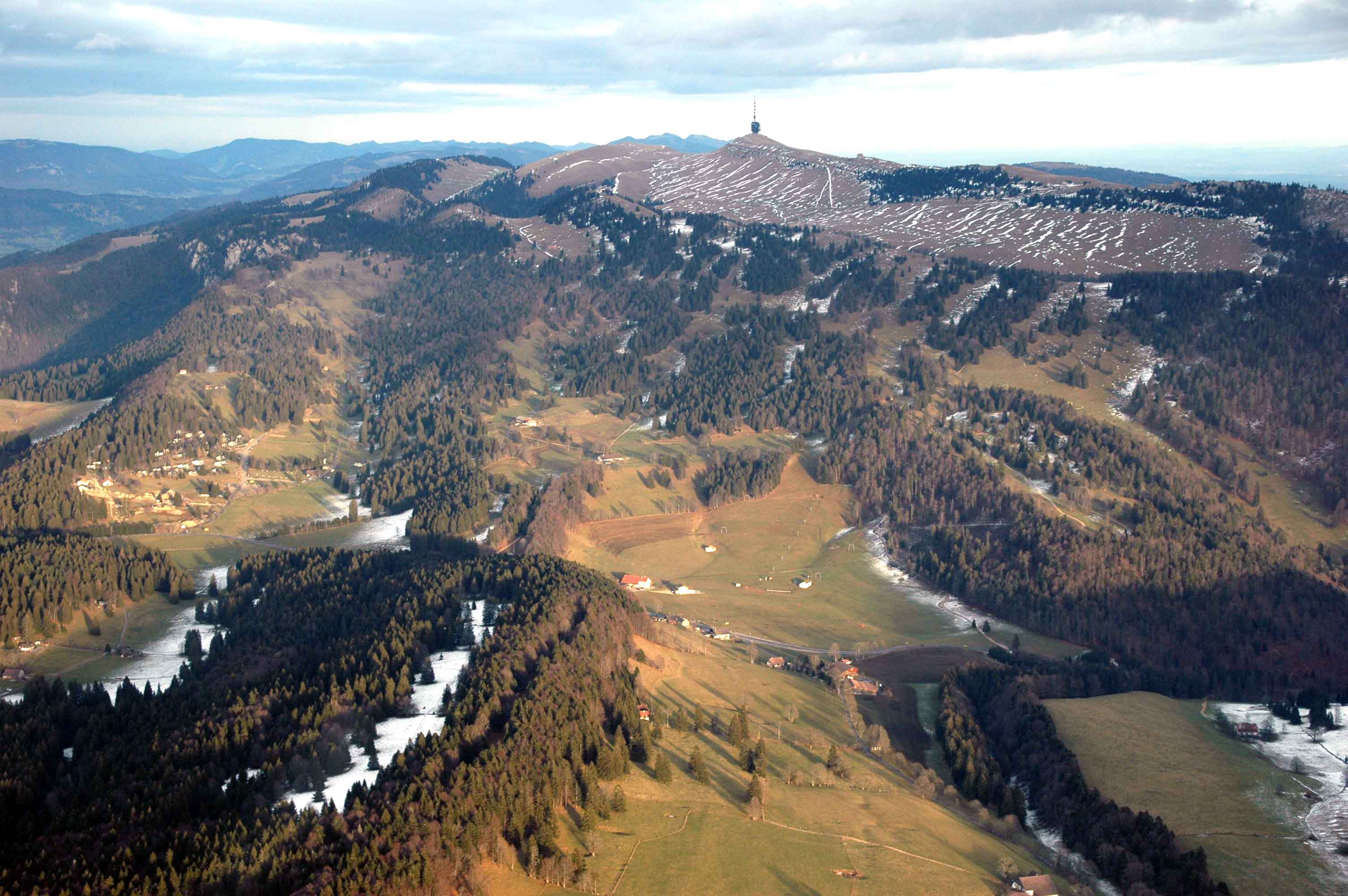
Chasseral
Before leaving the Jura we drove up the Chasseral to a height of 1609 metres. Luckily the weather was good that day and we got what we had come for – the view with the wow factor. Spread out far below us were three lakes and valleys populated with toy farms and cows where miniature trees and hedgerows reached to foothills and beyond them the jagged peaks of the Bernese Oberland clawing at the sky.
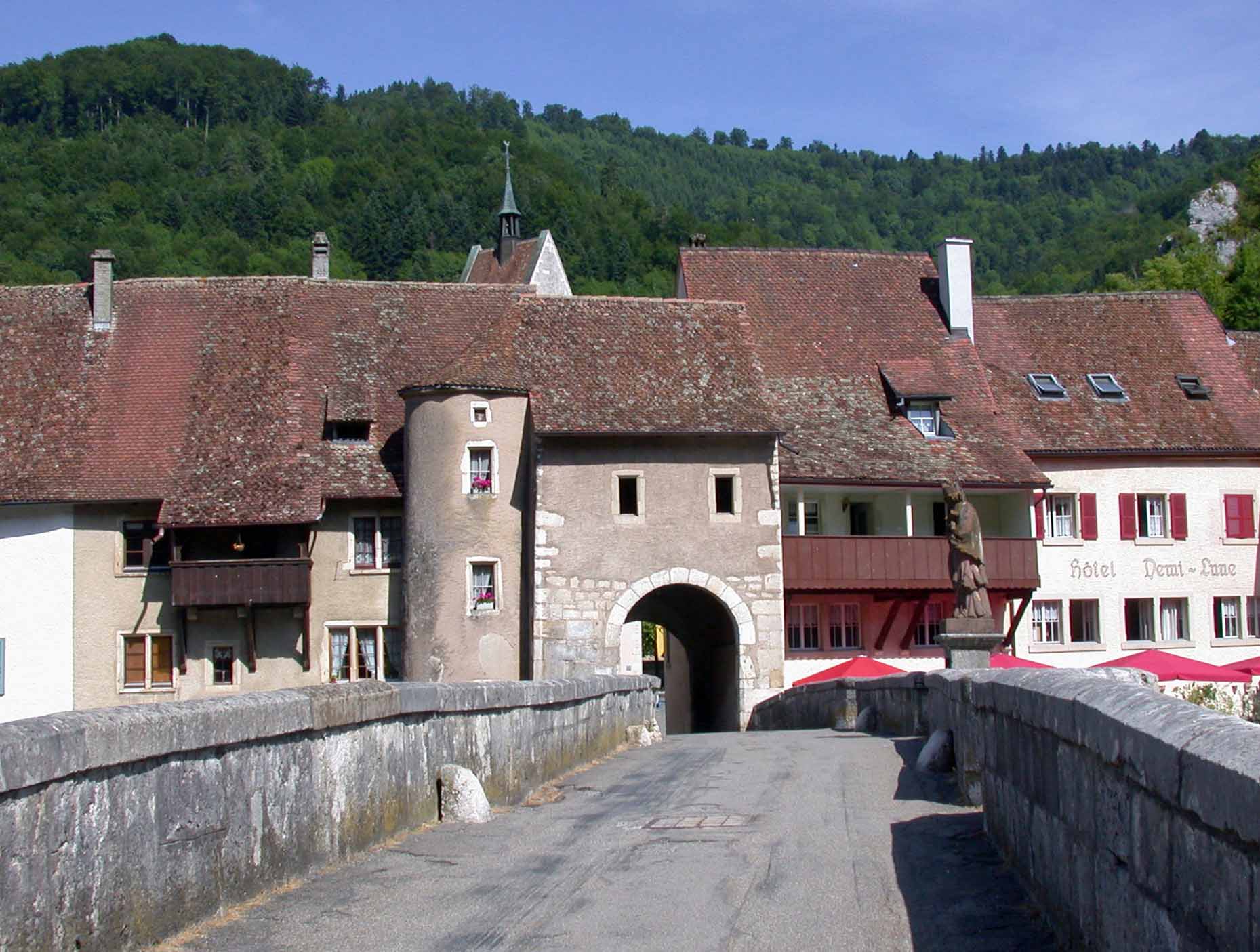
St. Ursanne
As we crossed the ancient stone bridge over the river Doubs into St-Ursanne it felt as if we were walking back into time. The little town with its 12th century collegiate church and cloister seemed as old as time. In the crypt lie several sarcophagi dating back to at least the 8th century. Maybe they contained the bones of the monks who had built their monastery close to the spot where the Irish hermit saint had settled. What, I wondered, would they have made of the wind turbines close to Bellalay that we had seen on one of our earlier walks. One of the turbines had been turned into an exhibition centre dealing with energy production and we had sheltered in it to escape the rain at the start of our journey into the Jura’s Watch Valley.

The Monastery at St. Ursanne
Thought of the wind turbines brought me back to the present. Time might fly past but it has been kind to this lovely region of Switzerland.
You may also like to read

SWITZERLAND - A COUNTRY OVERVIEW
Tour-smart shows you that Switzerland is a country with a healthy regard for the outdoor life.
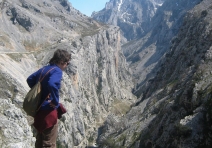
SPAIN - TAKING A PEAK AT THE PICOS DE EUROPE
Tour-smart contributer Mike Hampshire and his wife set off on a short-break to explore the unspoilt mountains of Cantabria
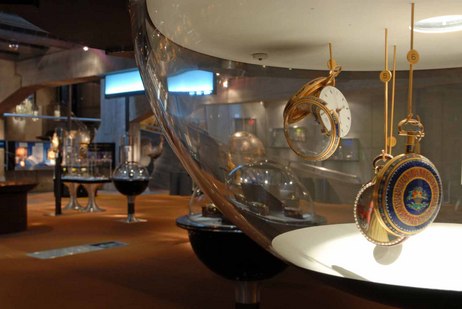
Comments